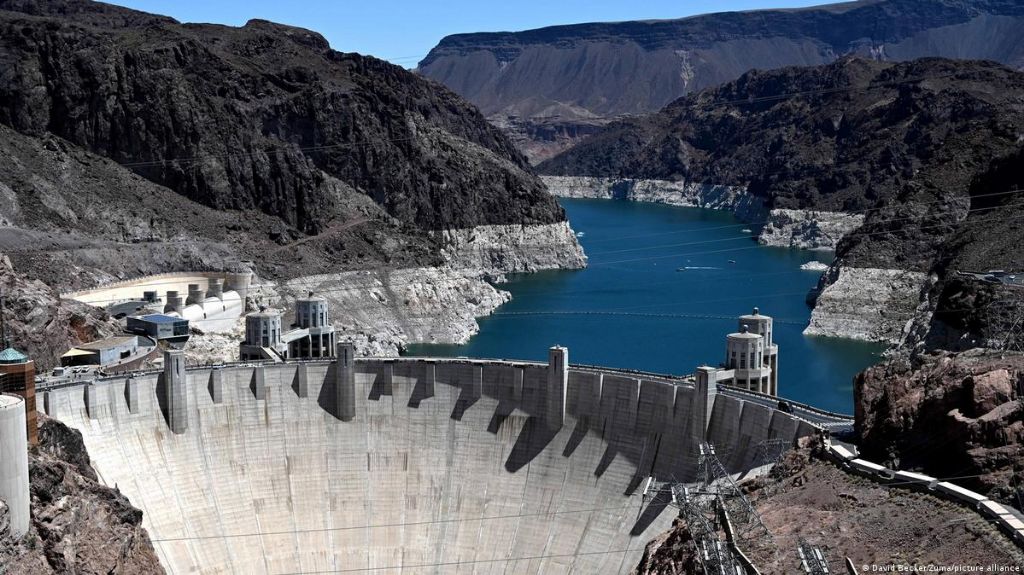Why Is Precipitation So Important?
Precipitation is any form of water that falls from clouds, including rain, snow, hail, and sleet. It is a crucial part of the water cycle, which describes how water moves around Earth through evaporation, condensation, and precipitation. The sun’s heat provides energy to evaporate water from oceans, lakes, rivers, soil, and plants. This water vapor rises into the atmosphere, condenses into clouds, and returns to the land and oceans as precipitation. This precipitation replenishes water supplies, connecting all parts of the hydrosphere. Precipitation is vital to life on Earth.
Provides Fresh Water
Precipitation is essential for providing fresh water to communities and ecosystems around the world. Rain, snow, sleet, hail and other forms of falling water replenish aquifers, rivers, lakes, and other freshwater supplies. Without precipitation, groundwater would not get recharged, and many sources of drinking water would be depleted. Precipitation is the driving force behind the water cycle, which circulates water continuously around the planet. The movement of trillions of gallons of freshwater from the atmosphere to the earth and back is made possible by precipitation. Even deserts depend on occasional rainfall to sustain life. Precipitation also supplies water for domestic, agricultural, and industrial uses. The availability of clean, fresh water is often taken for granted, but would not be possible without the consistent cycling of water between the atmosphere and the earth’s surface.
Water for Agriculture
Precipitation is absolutely vital for agriculture, providing the water essential for growing crops and raising livestock. Rain and snow supply the moisture that crops need to germinate, establish roots, grow vegetation and fruit, and reach maturity for harvest.
Most food crops – including major staples like wheat, rice, corn, and soybeans – require abundant moisture at specific stages of growth to optimize yields. Insufficient precipitation can lead to stunted growth, lower yields, and crop failures – threatening food security.
Livestock also rely on precipitation to grow pasture and crops for feed. Ruminants like cattle and sheep especially depend on rain-fed pasture. Adequate water is also essential for livestock health, milk production, and weight gain.
While irrigation assists crops and pasture in areas with low rainfall, it often depends on precipitation to replenish surface and groundwater. Managing agricultural water scarcity is a key challenge as climate change disrupts precipitation patterns.
Maintains Ecosystems
Precipitation is vital for maintaining healthy ecosystems like forests, wetlands, and lakes. Rainfall and snowmelt provide the fresh water that these ecosystems need to thrive. For example, forests rely on precipitation to replenish moisture in the soil that trees and plants absorb through their roots. Precipitation also fills rivers, streams, ponds, and other bodies of water that provide habitat for fish, waterfowl, and aquatic plants and animals. Wetland ecosystems depend on regular rainfall or flooding from precipitation to maintain their unique characteristics.
In areas that receive adequate precipitation, lush forests can grow. The Amazon rainforest, for instance, depends on heavy annual rainfall to support the many plant and animal species that live there. Precipitation also maintains lake ecosystems by filling lakes with fresh water. The Great Lakes in North America owe their vast size and depth to consistent precipitation falling over their expansive watersheds.
When precipitation patterns change due to climate change or periods of drought, ecosystems that rely on rain and snow can be severely impacted. Less precipitation means less fresh water available to support forests, wetlands, lakes, and other ecosystems. Many plants and animals are adapted to specific precipitation patterns and can struggle to survive when those patterns alter.
Powers Hydroelectricity

One of the most valuable ways precipitation benefits society is by generating hydroelectric power. Rain and snowmelt flowing through rivers and streams contain kinetic energy that can be harnessed and converted into electricity. Hydropower is produced by directing water to spin large turbines connected to power generators. The movement of the turbine blades drives the generator rotor which then converts the mechanical power into electrical power. Hydroelectric dams and power plants now provide 16% of the world’s electricity from this renewable energy source. Hydropower offers a clean alternative to burning fossil fuels and takes advantage of gravity and water cycle processes to produce energy in a sustainable manner.
Shapes Landscapes
One of the most visible ways precipitation shapes landscapes is through erosion and weathering. Rain, snow and other forms of precipitation slowly wear down rocks and soil over time through the forces of weathering and erosion.
Weathering is the process by which water, ice, acids and other agents slowly disintegrate rock material. As precipitation falls, it seeps into crevices in rocks and freezes, expanding into ice and breaking apart the rock. Flowing water also dissolves certain types of rock like limestone. Over hundreds and thousands of years, these weathering forces reshape the land’s surface.
Erosion occurs when the weathered rock material and soil is transported away by water, wind or gravity. Precipitation in the form of rain can wash away loose soil and sediments, carving channels and moving material downstream. Melting snow can also lead to increased erosion as it feeds streams and rivers.
ICONIC land formations like arches, hoodoos and slot canyons are a testament to the sculpting power of weathering and erosion over eons. Places like Arches National Park in Utah showcase precipitations ability to create unique and spectacular landscapes.
Influences Climate
Precipitation plays a major role in influencing climate on both regional and global scales. The amount and distribution of rainfall impacts large-scale weather patterns by releasing latent heat into the atmosphere. This can alter air pressure systems, wind flows, and ocean currents that transport heat around the planet.
Areas that receive abundant precipitation, such as the tropics, drive Hadley circulation which redistributes heat from the equator to the mid-latitudes. Meanwhile, regions with limited rainfall, like deserts, create circulation patterns bringing dry air to surrounding locations. The Inter Tropical Convergence Zone, which encircles the Earth near the equator, is defined by tropical rainfall and drives many equatorial climate systems.
Changes in precipitation patterns, especially monsoons in Asia and Africa, can affect agriculture, ecosystems, and human populations on entire continents. Understanding these complex interactions between rainfall, energy flows, and climate is crucial for modeling and predicting future climate change. Overall, precipitation patterns help shape both regional climates as well as global climate systems.
Societal Impacts
Precipitation has many important societal impacts related to agriculture, energy, water resources, and more. Rainfall and snowmelt provide the freshwater that is essential for irrigating crops and raising livestock. Agriculture relies on having adequate precipitation at the right times of year. Too much or too little rainfall can cause crop failures and livestock losses. This directly impacts food production and food security.
The amount of precipitation affects how much hydropower can be generated. During rainy seasons, dams have more water flow to produce hydroelectricity. In droughts, lower water levels in reservoirs limit energy production. Changes in precipitation patterns force adjustments to hydroelectric operations and planning.
Precipitation replenishes aquifers, rivers, lakes and reservoirs that supply drinking water and water for industrial uses. Variations in rainfall affect water quality and availability for human consumption and economic activities. Floods and droughts can severely disrupt water resources. Managing water resources relies heavily on accurately understanding and predicting precipitation patterns.
Environmental Benefits
Precipitation provides numerous environmental benefits that are essential for ecosystem health and human wellbeing.
Rainfall helps clean pollutants from the air through a process called wet deposition. As raindrops fall through the atmosphere, they absorb air pollutants like sulfur dioxide and nitrogen oxides. These pollutants are then washed out of the sky and onto the ground. This removes harmful substances from the air and improves air quality.
Precipitation also replenishes groundwater through a process called groundwater recharge. When rain falls on the land, some of the water infiltrates the soil and percolates down into underground aquifers. This recharges groundwater supplies that feed springs, wells, and rivers. Groundwater is an important source of freshwater for human uses.
Furthermore, rainfall nourishes vegetation and helps maintain forest health. The water provided by precipitation allows plants and trees to grow. Vegetation plays a vital role in soil conservation, water cycling, wildlife habitats, and filtering pollutants. Healthy forests also absorb carbon dioxide from the atmosphere, which helps mitigate climate change.
By providing fresh water, replenishing groundwater, supporting vegetation, and cleaning the air, precipitation offers numerous environmental benefits that make the planet more livable.
Conclusion
In summary, precipitation serves numerous crucial roles on our planet. It provides freshwater to communities and ecosystems. Rainfall enables agriculture and food production to sustain growing populations. Precipitation shapes landscapes by eroding rock and soil over time. The water cycle transports moisture around the world, influencing local climates and weather patterns. Changes in precipitation impact societies and environments in many ways. While too much or too little rain can create challenges, overall precipitation generates abundant benefits that make life possible.
The wide-ranging importance of precipitation cannot be overstated. From quenching thirst to generating power, rainfall provides foundational support for life on Earth. As our climate changes, managing and protecting our precipitation patterns only grows in significance. With care and foresight, we can ensure precipitation continues its vital services for generations to come.




